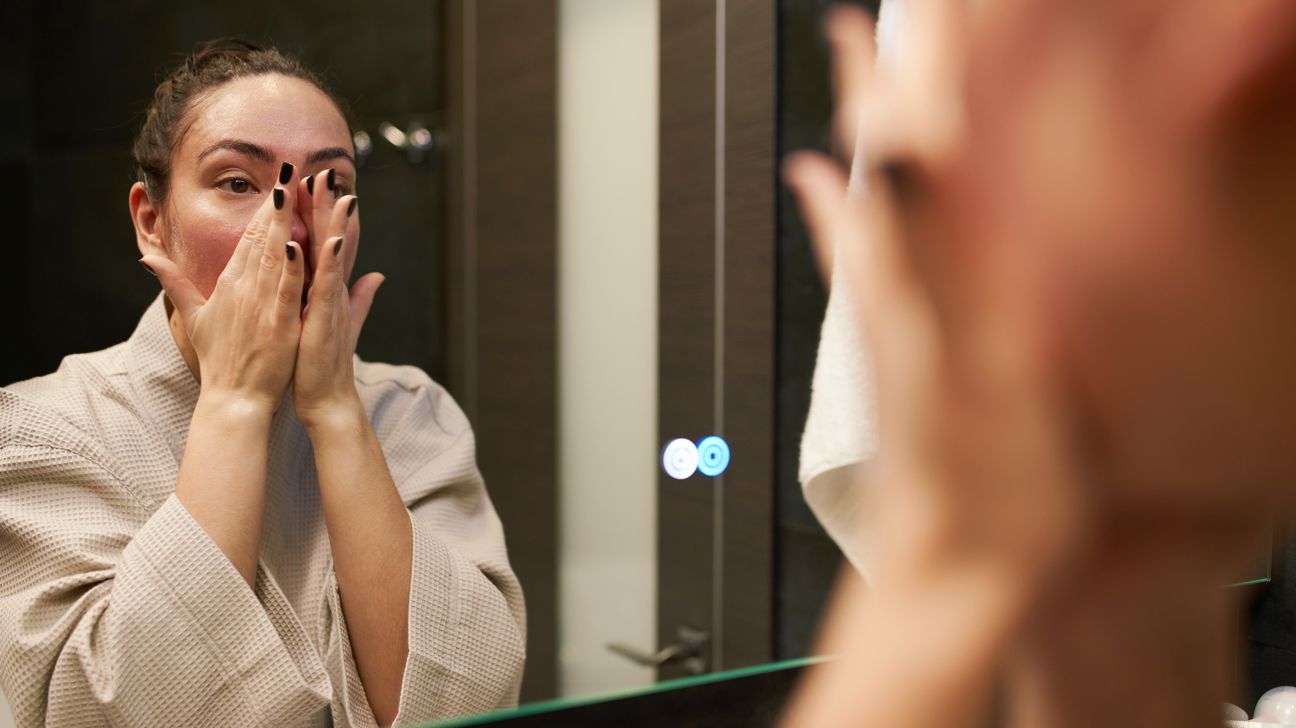Is it a zit, an ingrown hair, a polyp, or something else? Weird nose bumps have various causes, from harmless to time to call the doctor.
There are many possible causes for bumps inside your nose — some as harmless as a pimple, others that might need more attention. It’s easy to imagine the worst, but the truth is usually less alarming.
If you’ve got a painful, annoying, or strange bump in your nose, keep reading to learn what it might be, whether it’s worth worrying about, and how to deal with it.

So, what’s behind these bothersome nose bumps? Here are some common culprits:
Nasal vestibulitis
This is inflammation of the nasal vestibule, the area just inside your nostrils, often caused by bacterial infections. It can lead to painful, red bumps sensitive to the touch. Common triggers include frequent nose-picking, blowing too hard, or even plucking nose hairs.
Pimples
Like on your face, the pores inside your nose can become clogged with oil, dirt, and bacteria, leading to pimples. These can be painful and may swell, especially in such a sensitive area.
Nasal polyps
Non-cancerous growths can develop in the nasal passages or sinus lining due to chronic inflammation, allergies, or infections. While they’re usually painless, larger polyps can cause blockages, leading to breathing difficulties, a reduced sense of smell, or recurrent sinus infections.
Infected ingrown hairs
When you pluck or trim nose hairs, the hair can sometimes grow back into the skin instead of out, causing an ingrown hair. If this becomes infected, it can result in a painful bump inside the nose.
Trauma
A bump can also form inside the nose due to trauma, such as a blow to the nose, or even from something as simple as aggressive nose-picking. The trauma can cause the tissue to swell or become bruised. In some cases, a hard bump may form as the tissue heals.
Cysts
Fluid-filled sacs that can form in your nose, usually harmless but sometimes uncomfortable.
Cartilage issues
A hard bump inside the nose might be due to problems with the cartilage, such as a deviated septum or cartilage overgrowth.
Fibrous papules
Small, benign bumps that may appear on or in the nose are often mistaken for pimples but are fibrous tissue growths.
Wondering if that bump inside your nose is something serious? Here’s what to look out for:
- Pain or tenderness. Especially when touching or blowing your nose.
- Redness or swelling. Around the area of the bump.
- Discharge. You need to monitor the condition carefully to see if there’s any pus or blood.
- Difficulty breathing. If the bump is large enough, it might obstruct your airflow.
- Persistent bumps. Anything that doesn’t go away after a week should be checked out.
Ready to say goodbye to that pesky bump inside your nose? The proper treatment depends on what’s causing it, but here are some ideas to ease the discomfort and promote healing:
- Apply warm compresses. Apply gentle heat to the area to reduce swelling and promote drainage if it’s a pimple or infection.
- Use saline rinses. Keep your nasal passages clean with saline spray or a Neti pot.
- Avoid nose-picking. Seriously, just don’t. Not only is it eurgh, but it’s a significant cause of trauma and infection.
- Moisturize. Prevent dryness and cracking with a gentle, nose-safe moisturizer, especially in winter.
- Leave ingrown hairs alone. Let them resolve independently or see a doctor if they get infected.
Additionally, if you’re dealing with nasal polyps, a healthcare professional might prescribe steroid sprays to shrink them and reduce inflammation, making breathing easier.
On the other hand, if a bacterial infection is the culprit, as in cases of nasal vestibulitis, your doc may recommend a topical antibiotic like mupirocin. This ointment is applied directly inside the nose to target the infection, reduce redness, and promote healing.
While most nose bumps aren’t a big deal, some need more attention. Here’s when to make that appointment:
- Persistent or recurring bumps. If it’s sticking around or keeps coming back, get it checked.
- Severe pain. Pain that doesn’t ease up with home treatments is a sign you need professional help.
- Obstruction. If a bump makes breathing hard, it’s time to see a doc.
- Discharge. Any pus, blood, or other discharge from the bump is a red flag.
Even the slightest bump inside your nose can be a major annoyance. Causes vary from harmless pimples to things that require more attention, like polyps.
Self-care measures can usually ease discomfort and speed healing, but if it’s super painful or worrying discharge, it’s time to sniff out professional help.

